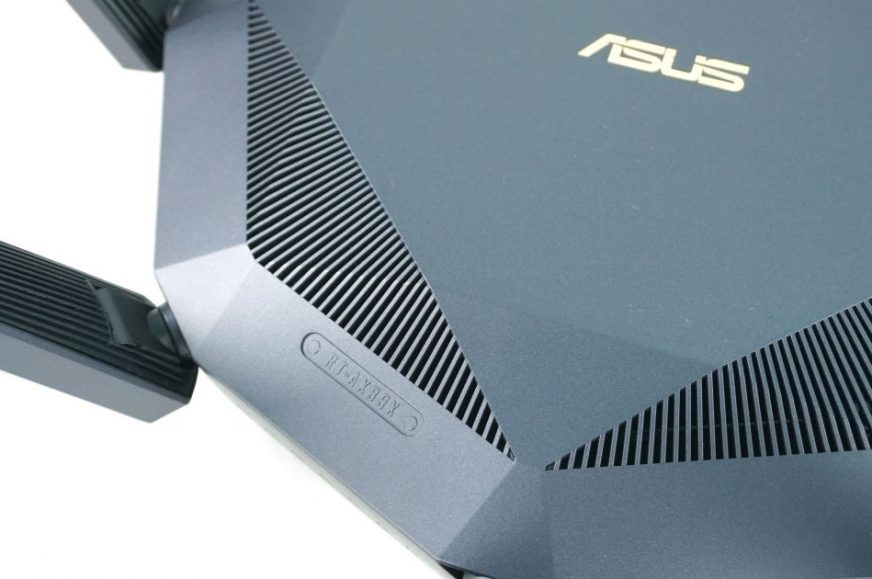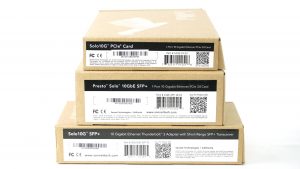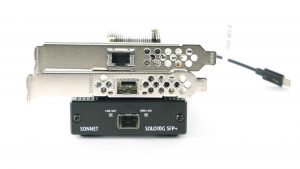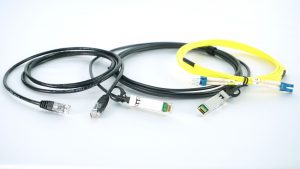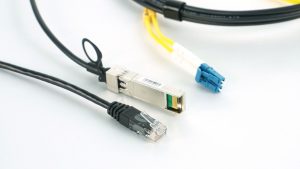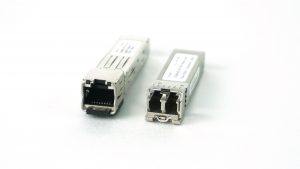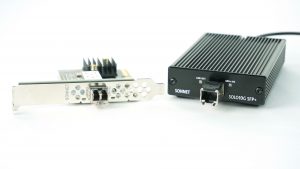10 Gbps network – pitfalls and solutions
We only test routers rarely, usually if they bring any significant news. The last time, for example, it was an Asus router with WiFi 6. The first home router with a 10-gigabit connection is now coming to the market from the same manufacturer, using RJ45 and SFP+. The slow 1 Gbps cable connection was the drawback of WiFi 6 routers, and this is what the new RT-AX89X eliminates. Thanks to 10 Gbps connectors, the home network is thus entering a new era.
10 Gbps network and how to?
In the last test of the RT-AX88U, we wrote more about WiFi 6 and what benefits it brings. All this also applies to the review novelty RT-AX89X, so I recommend studying these features. Therefore, we will no longer focus on WiFi 6 and repeat what we said in the last test, quite the opposite. We will focus on the hot news in the field of home networks and that is a 10 Gbps connection.
This is a logical next step in the network speed hierarchy, which has long been used in a corporate/server environment. There you can meet even 100 or 400 Gbps Ethernet, which is the music of the future for households. So back to today’s 10 Gbps Ethernet topic. What is its advantage and why is it a substantial update compared to the current state of home networks?
Introduction to the issue
First of all, it should be mentioned that most households with current hardware are in the vast majority limited to 1 Gbps Ethernet, i.e. to 1000 Mb transmissions via a cable network. If we went back a few more years, you could also only have 100 Mb network elements at home. Currently, however, 1 Gbps can be considered a standard and therefore we will be based on it.
Another important finding. In this topic, we will not focus on the speed of Internet connection, that is, the speed of your Internet Service Provider (ISP). By that I mean if you have fiber-optic, ADSL, etc. at home. Of course, the speed of your internet connection is also related to the speed of your home network, but not directly. The only case in which they come into conflict is that your ISP would offer higher speeds than your network elements can handle, which would also limit the speed of your internet connection. To clarify this, let me give a practical example. For example, you may have a 250 Mb fiber-optic Internet connection, but your router only has 100 Mb WAN and LAN ports. This will limit your Internet connection at home to a maximum speed of 100 Mbps. If your router or switch supports 1 Gb connection, you will be able to use the full 250 Mbit provided by your operator. It is therefore necessary to distinguish between the speed of the home network and the Internet connection.
Why is 10 Gbps a big step forward?
As the name implies, 10 Gbps Ethernet offers ten times higher speed than 1 Gbps Ethernet still used today. This is practically the same jump as we saw when switching from 100 Mb to 1 Gbps (1000 Mbps). In practice, this means that the theoretical maximum transfer rates will increase from 125 MBps (megabytes per second) to 1250 MBps/1.25 GBps (gigabytes per second). Of course, whether you transfer 100 MB or 1 GB per second is a big difference. Again a practical example, you’ll be able to transfer a 40 GB movie in a 1 Gbps network in 5 minutes and 20 seconds, in a 10 Gbps network in 32 seconds. I believe that this way you will be able to better imagine the speed difference. It is also important to mention that the presented calculations are purely theoretical and will not represent a real scenario, where many other variables enter the equation and should therefore be taken with a grain of salt.
10 Gbps network: How to and what to look out for?
First of all, I would like to point out again that the issues discussed have nothing to do with the speed of the Internet connection, so buying new hardware will not allow you to download a new game or movie 10 times faster than before. We are talking about LAN speed, i.e. between devices in your home.
A home network consists of several elements and every single one of them must be able to support 10 Gbps in order to be able to take advantage of the mentioned speed increase. So let’s start with the very lowest-level element, which is cabling. You may be wondering why we’re discussing cables, because Ethernet as Ethernet, right? The opposite is true. Again, look up what cables you use at home, because in the vast majority of cases it will be CAT5E or in the case of older ones even CAT5. In the first case, the cables can transmit 1 Gbps, in the latter only 100 Mb/s. You will need CAT6, CAT6A or CAT7 cables to make use of the 10 Gbps connection. The differences between the individual versions are, for example, in the maximum length while maintaining the maximum speed and so on. In any case, for a 10 Gbps network you will need newer Ethernet cables than the commonly used and supplied CAT5(E).
Like cables, all other elements of the home network must support a 10 Gbps connection. First of all, it will be a router, such as the reviewed RT-AX89X, but it can also be a switch, NAS (Network-attached storage) or the end device, such as a computer/laptop. The only network elements that do not have to support 10 Gbps, and probably won’t for a long time, are converters/modems from your ISP, that, for example, convert the fiber-optic cable to Ethernet in your home network. ISPs are most probably not going to start providing a 10 Gbps home Internet connection in the near future, and I assume that all modems that are currently supplied with the Internet connection are limited to 1 Gbps LAN connectors. So this network element remains the only one unchanged and at the moment you have no way to replace it. It would not bring any advantage either (unless you had access to some corporate network with a speed higher than 1 Gbps).
The state of my personal local area network before these tests was as follows. A cable from the modem is run to the router and from there it runs to the NAS, computers, etc. All cables are already CAT6A/CAT7 cables, so the first condition – the cabling – is met. The second condition is the central element of the network – the router. The reviewed RT-AX89X offers two 10 Gbps ports, namely the classic RJ45 and the second SFP+ port, less known to ordinary people, which is used mainly in corporate networks, servers, etc. It has only rarely appeared in home networks so far, and I have also met it for the first time now. In the next step, we need to ensure that other devices in the network have the opportunity to use this 10 Gb connection. So the most important thing will be that your computer or laptop can be connected to the router.
10 Gbps connection for PC and laptop
Connecting a computer to the router with a cable is probably not necessary to describe, you will find an RJ45 connector on every common motherboard. The problem again arises in what speeds it supports. Most motherboards will support 1 Gbps and some newer 2.5 or 5 Gbps. There are only a few high-end motherboards on the market with support for 10 Gbps LAN connectors already built into the main I/O on the back. For example, we tested the ASRock X470 Taichi Ultimate, or the Gigabyte Aorus Xtreme on the X570 platform. 10 Gbps LAN is still extremely rare on motherboards, so it can be assumed that most users do not have such a board. The absence of 10 Gbps LAN on laptops is probably 100%, I’m not aware of any laptop on the market that would offer such a connector. So what is the solution if you don’t have one of the few motherboards with a 10 Gbps LAN port?
The solution is relatively simple, which means using PCIe expansion cards or a Thunderbolt dock for laptops.
Thanks to the cooperation with an American company Sonnet Technologies, we can show you such accessories and also test them in practice. Personally, I have two motherboards with 10 Gbps LAN ports, but we will perform the tests on PCIe cards, which is the relevant solution for most of you. The manufacturer sent us two PCIe cards for the tests, labelled as Solo10G and SoloG SFP+, and also a Thunderbolt 3 dock with SFP+ connector with the designation Solo10G SFP+ (Thunderbolt 3 Edition). You can see them in their full beauty in the pictures below. We used all three products in the tests and we will also show them in the test rig. I have great experience with products from Sonnet, they work, you could say in plug and play mode, i.e. without the need for any user intervention, and the products always meet what the manufacturer claims on the website. I have also been using their TB3 and eGPU docking stations for a long time, with which I also have only very good experience. The manufacturer is relatively unknown in our country and therefore we want to give them space at least in this way so that you can get to know them.
We plan to test other products with 10 Gbps LAN support this year, mainly various NASes and switches.
Appendix – types of connectors
So far, we’ve talked exclusively about using the RJ45 connector, which you all know well. However, the router also offers an SFP+ connector, which brings additional connection options. You can either plug a cable with metal parts into the SFP+ port, which is referred to as a DAC (Direct-Attach Copper). They are offered in various lengths, I bought 1, 2 and 3 m cables from various manufacturers for the tests. The picture shows the DAC cable in the middle, the RJ45 is on the left.
The second new option is the use of optical cables, which, however, require SFP+ transceivers. These are plugged into the SFP+ port at both ends of the connection and then the optical cable into the transceivers. The SFP+ transceivers can also support classic RJ45 connectors, but you need a special transceiver, which was again provided by the manufacturer Sonnet.
I have to point out one thing about the SFP+ transceivers. That is the compatibility. The issue of the SFP+ connectors is still new to me, too, but from my own experience and even after communication with manufacturers I can say that although you can physically connect a specific transceiver to a router, computer or switch, it does not automatically mean that it will really work. It seems that the compatibility of SFP+ ports and individual transceivers is quite a lottery, and the only optimal solution is probably to use all products from one manufacturer. This was not possible in our case, as Asus does not produce 10 Gbps SFP+ transceivers. I was unable to run the Sonnet optical transceivers on the router, about what I’ve informed Asus and am waiting for an answer. Thus, the tests were performed using a DAC cable that worked without problems.
- Contents
- Package and specifications
- 10 Gbps network – pitfalls and solutions
- Software – General settings
- Software – Advanced settings
- Test methodology
- Test results
- Conclusion





